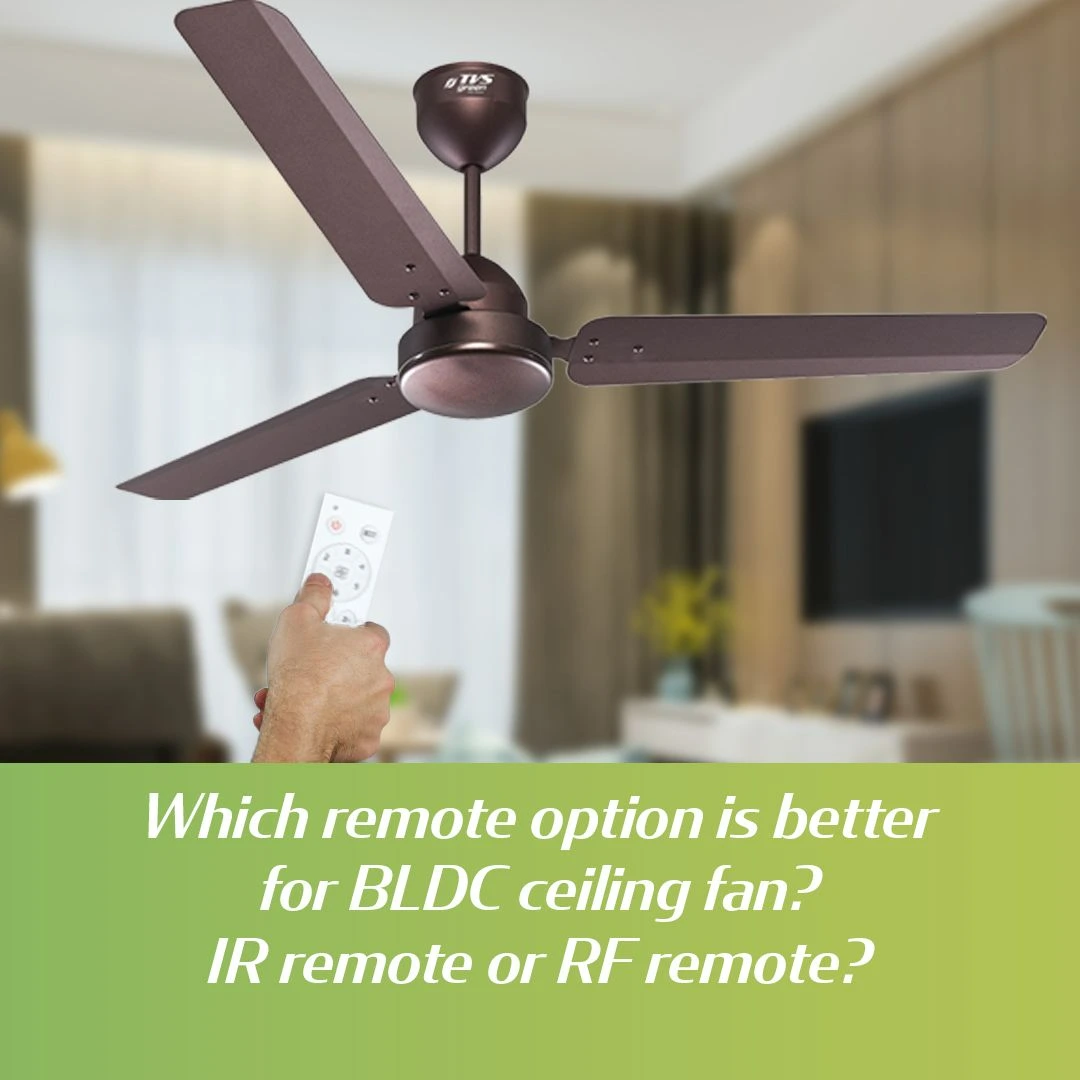
Which remote option is better for BLDC ceiling fan? IR remote or RF remote?


MARCH 24, 2025
IR vs. RF Remotes: The Battle of the Buttons
When it comes to controlling your modern ceiling fan, the type of remote can make a world of difference. You may not think much about it—press a button, the fan spins—but have you ever wondered why some remotes work from anywhere in the room while others need you to point directly at the fan like a magic wand?
The answer lies in the technology used: Infrared (IR) vs. Radio Frequency (RF). Both have their place, but if you’re looking for a truly effortless experience, RF remotes take the lead.

IR Remotes – The Old School Clicker
Infrared (IR) remotes work like your TV remote. They send signals via infrared light, which means the remote and the fan need to “see” each other. If something blocks the signal—a lamp, a chair, or even your own hand—the remote won’t work. That’s why you sometimes find yourself tilting, waving, or shifting positions just to get the fan to respond. It’s like playing a game of remote-control gymnastics.
Another issue with IR remotes is their limited range. Most work within 10 to 15 feet, which is fine for small rooms, but if your space is larger, you might need to move closer for the signal to register. And then there’s interference. IR signals and remotes struggle with interference from sunlight, LED lights, and even other electronics. In some cases, if multiple IR devices are in the same room—like a TV and a soundbar—they can interfere with each other, causing annoying delays or misfires.

RF Remotes – The Future Proof Option
Radio Frequency (RF) remotes, on the other hand, communicate using radio waves. That means no need to aim, no obstacles get in the way, and no struggle to get the signal through. Whether your remote is under a blanket, behind a chair, or pointing at the wall, it still works. If you’ve ever wanted to change the fan speed without perfectly aligning the remote like a sniper, RF is the way to go.
The other biggest perk of RF remotes is their extended range. Unlike IR remotes, which tap out at around 15 feet, RF remotes can work from as far as 30 feet away. That means you can operate your fans from anywhere in the room, no matter how large it is. In fact you can even step into another room and still have full control over your fan. Imagine turning off the bedroom fan from the hallway before heading downstairs—no need to walk back just to press a button.
Another major advantage is reliability. RF signals don’t get disrupted by bright lights, TVs, or other devices. Unlike IR remotes, which can struggle in certain lighting conditions, RF remotes deliver stable performance no matter what. No delays, no second-guessing, just instant response.




Why RF Remotes Are the Perfect Match for iDrive Motor Fans
If you own a TVS Green Fan powered by iDrive motor technology, pairing it with an RF remote takes the experience to the next level. These fans are already built for superior airflow, energy efficiency, and whisper-quiet operation. With an RF remote, you can enjoy all of these benefits without ever worrying about where you’re pointing the remote or how far you are from the fan. It’s all about making comfort effortless.

When Would You Pick an IR Remote?
Of course, IR remotes aren’t entirely obsolete. They’re still a viable option if budget is your top concern, as fans with IR remotes are usually slightly cheaper. If your fan is always within sight and you don’t need long-range control, an IR remote might do the trick. But in terms of ease of use, RF remotes clearly offer a better experience. And running at just Rs.2 a day, TVS fans are a smarter budget pick too. No need to skimp on the remote.

Final Verdict: RF for the Win
At the end of the day, the right remote depends on how much convenience matters to you. If you don’t mind adjusting your position every time you want to change the fan speed, an IR remote will work just fine. But if you want the freedom to control your fan from anywhere in the room, or from under your blankets when you’re bleary and sleepy and don’t want to wake up fully to adjust the fans in the middle of the night, RF is the smarter choice.
So, the next time you’re upgrading your fan, don’t just focus on airflow and efficiency. Think about the way you interact with it daily. A ceiling fan should keep you cool, and be sustainable and easy to use without making you work for it, and that’s exactly what TVS Green iDrive Fans and RF remotes help you achieve.






